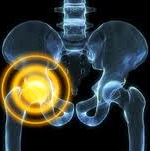The manufacturers of the Wright Conserve metal on metal hip implant were hammered in a recent personal injury and defective product liability trial. The Georgia federal jury awarded $11 million to Robyn Christiansen, in the first bellwether Wright Conserve hip replacement lawsuit to go to trial.
The jury awarded $1 million in compensatory damages and $10 million in punitive damages, which is designed to punish the Wright Conserve hip replacement manufacturer for gross negligence for recklessly disregarding the safety of hip patients.
Over 500 Wright Conserve Hip Implant Lawsuits
Wright Conserve hip replacement manufacture is exposed to more than 530 personal injury and product liability lawsuits. Plaintiffs claim that patients suffered serious and catastrophic hip failures from the metal-on-metal design was unreasonably dangerous and defective.
Wright Conserve Hip Lawsuit Allegations
According to the lawsuits, the metal-on-metal hip leads to metallic debris to be released during the grinding action between the metal cup and metal ball, which causes early implant failure. Some complications include premature device failure, loosening, metal poisoning and metallosis and severe pain.
Artificial hip replacements are expected to last at least 15 to 20 years, but Christiansen’s Wright Conserve hip implant failed after only six years, resulting in the need for major revision surgery.
Metal on Metal Hip Implant Side Effects
Metal on Metal hip Implants have been linked to the following side effects:
- Premature failure of the metal hip implant (breaking, needing early replacement)
- Dislocation of the hip implant
- Release of toxic metal substances into the bloodstream
- Loss of bone through inflammation
- Inflammatory reactions causing pain and lack of mobility
- Early replacement with another hip implant
- Death of hip muscle and tissue
- Pseudotumors, fleshy growths around the hip joint
- Metallosis and Chromium Cobalt Poisoning
Wright Conserve Hip Multidistrict Litigation
Since February 2012, all Wright Conserve cases have been centralized and coordinated before U.S. District Judge William S. Duffey, Jr. in the Northern District of Georgia as part of multidistrict litigation or MDL.
A series of mini trials or bellwether trials involving Wright Conserve hips have been scheduled to take place in 2016.
Many Metal Hip Manufacturers Exposed to Lawsuits
Another metal hip implant similar to the Wright Conserve, the DePuy ASR, was exposed to design failures. Johnson and Johnson the parent of DePuy was exposed to 12,000 lawsuits and settled 7,500 of them for $2.5 billion. According to the DePuy trials, Johnson & Johnson knew that as many as 40 percent of implants would fail within five years.
2010 DePuy ASR Recall
In 2010, Depuy Orthopaedics’ ASR hip replacement recall focused attention to potentially serious injuries from these devices. Medical studies had revealed and doctors knew for several years prior to the worldwide recall that the ASR hip suffered from premature failure and the release of heavy metal ions including Cobalt and Chromium.
The company, owned by the pharmaceutical giant Johnson and Johnson, knew of these problems but denied them and played them down. Finally they had to face the music and ordered a recall, only after 96,000 had been implanted worldwide and 32,000 in the U.S.
In September 2011, the National Joint Registry of England and Wales published a report that DePuy’s ASR acetabular implant was replaced or removed 29 percent of the time after just six years.
2012 Stryker Rejuvenate and ABG II Hip Recall
Three years after the Rejuvenate and ABG II hip systems were first approved, Stryker issued a voluntary recall of the devices in July 2012. The recall came after Stryker received post-market data that revealed the metal modular necks and stems of these two devices were prone to corrosion and fretting that may release excessive metal debris into body, damaging surrounding bone and tissue.
The neck is made of cobalt chromium and the stem is made of Stryker’s proprietary titanium alloy blend designed to resist corrosion and fretting.
Stryker issued an Urgent Field Safety Notice that warned doctors and hospitals that these two implants had an increased rate of Adverse Local Tissue Reactions (ALTRs), two months before the recall. ALTR is inflammation in the tissues surrounding the implant because of metal debris released when they components rub together.
2012 Smith & Nephew R3 Acetabular System Recall
Smith & Nephew launched its R3 Acetabular System in the United States in 2009. In June 2012, the company issued a worldwide recall of the metal liner that was part of its R3 system, after reports of implant failure, loosening, pain, dislocation and metal sensitivity.
The metal liner, created a metal-on-metal junction, and was marketed as durable and wear-resistant. According to the recall, Smith & Nephew said the metal liner had not performed as well as the company had expected. Some 4,000 Americans received the metal liner option before it was recalled.
 Dallas Fort Worth Injury Lawyer Blog
Dallas Fort Worth Injury Lawyer Blog


